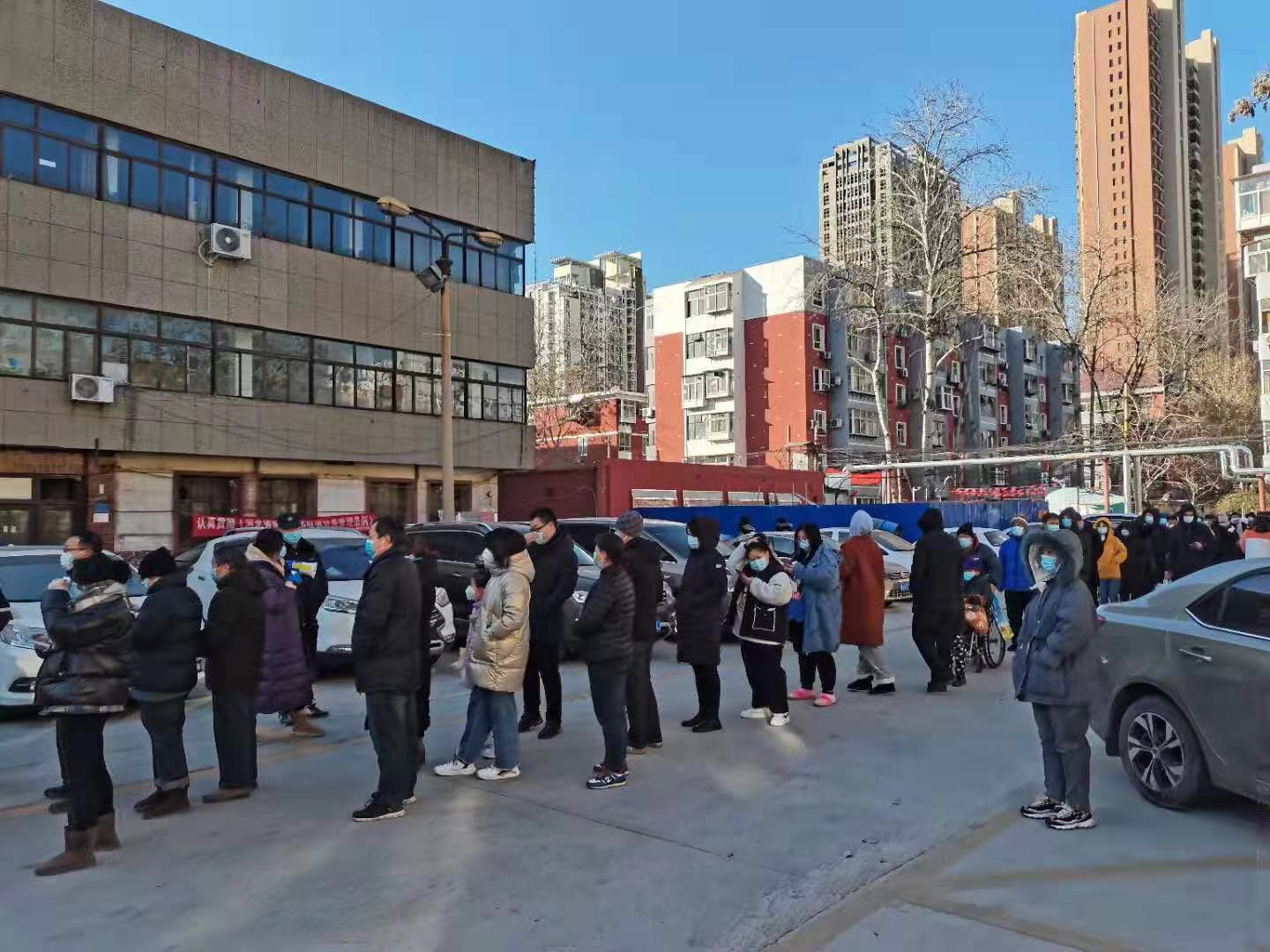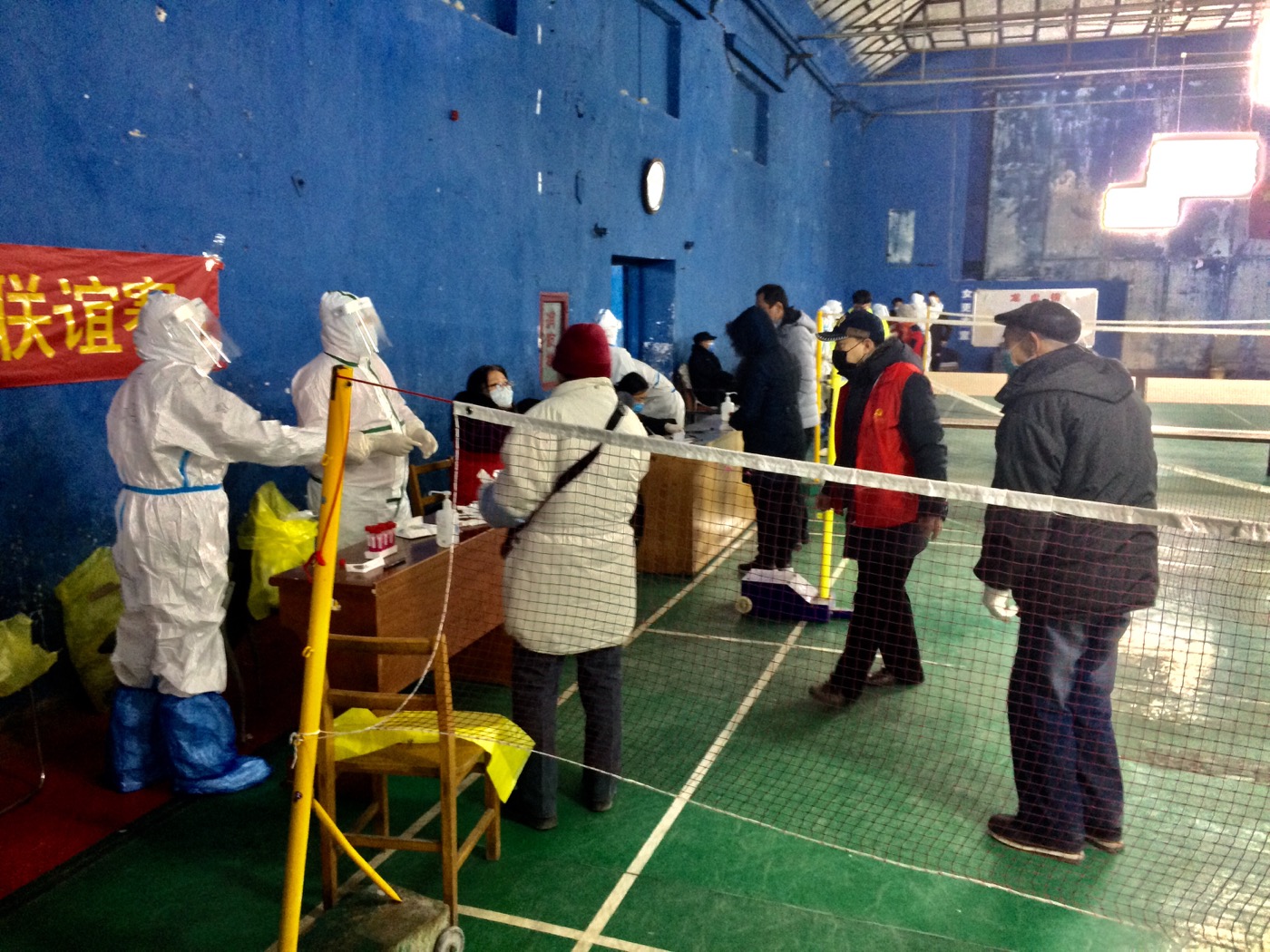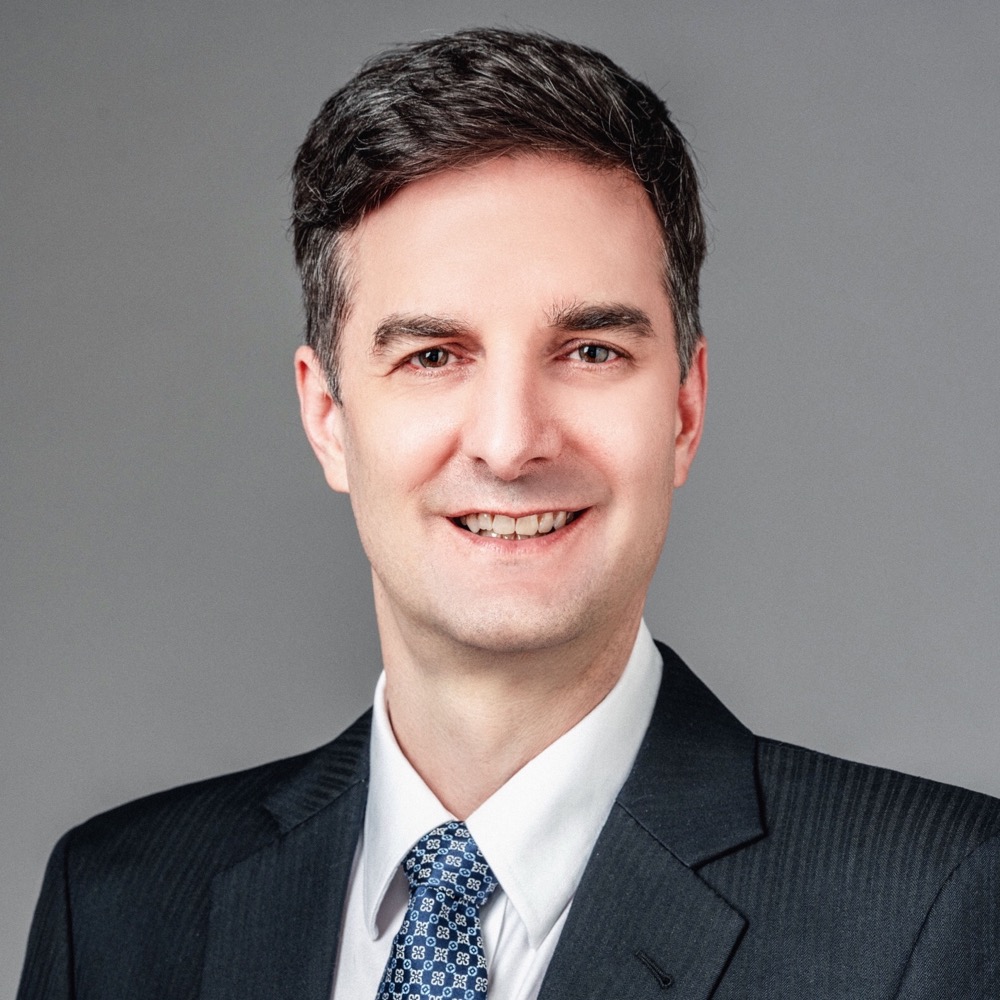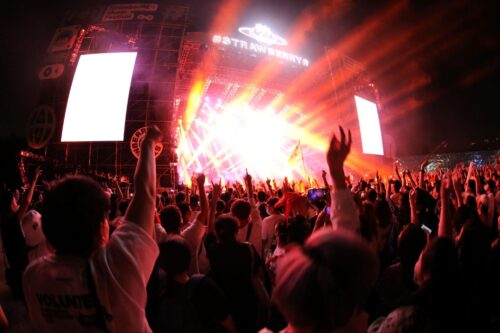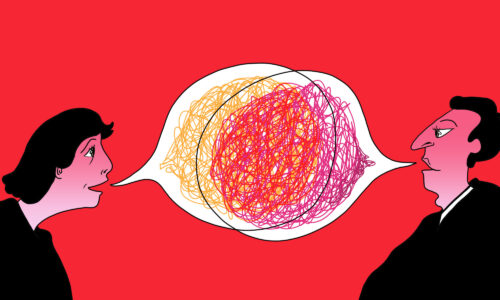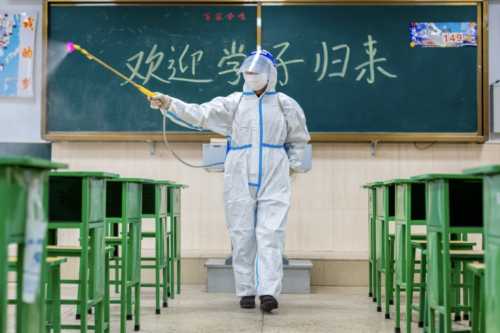‘Wartime mode’: A COVID-19 dispatch from Shijiazhuang
“We were notified that if one person in the entire apartment complex tested positive, then all residents would have to do an in-house 14-day quarantine,” writes Todd Jackson, an American in Shijiazhuang, Hebei, which went into “wartime mode” this week to battle a COVID-19 outbreak. All in all, though, residents have complied with authorities, without much panic or pushback.
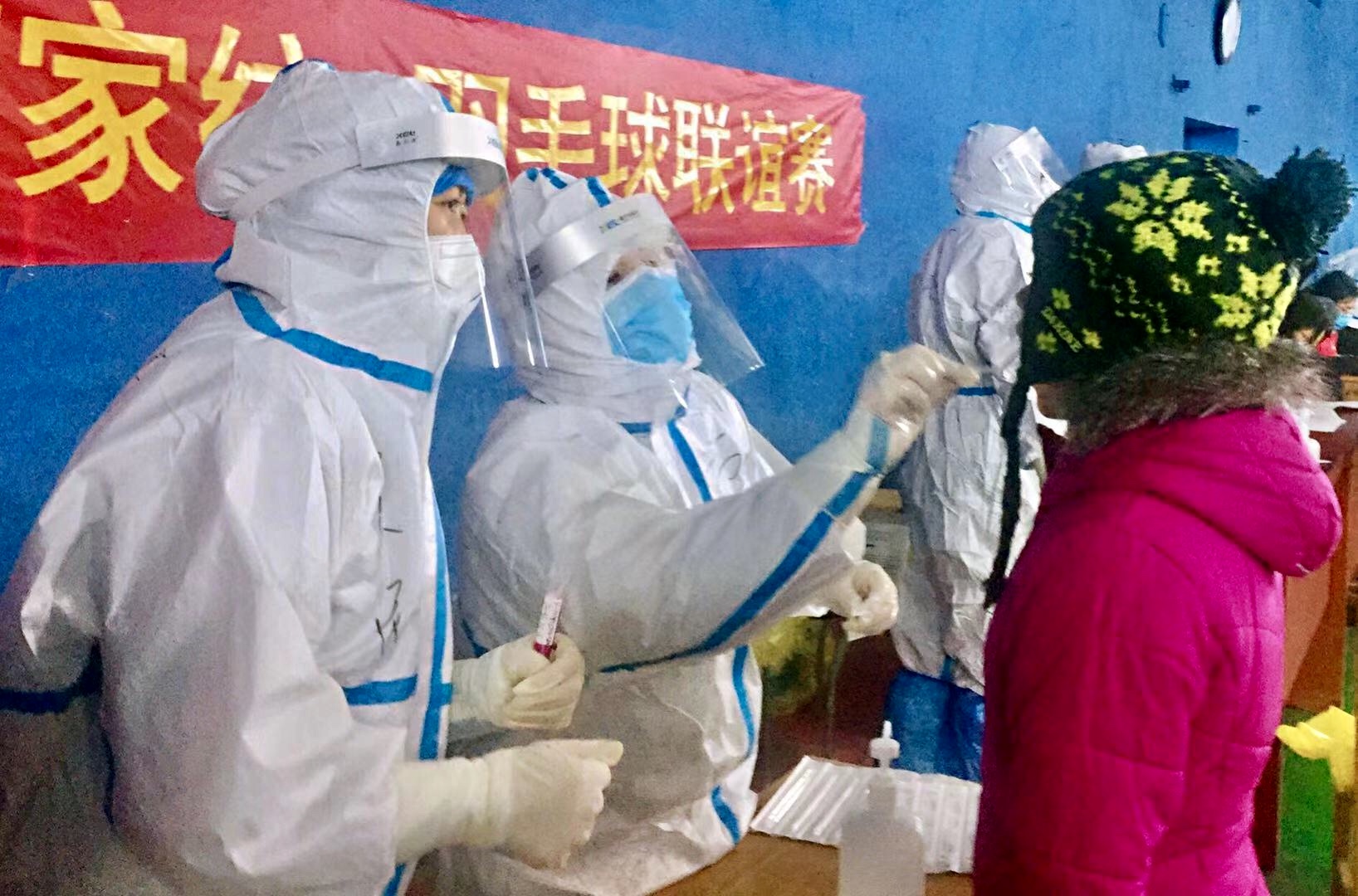
My family flew from the U.S. to China during the first week of January 2020, and have been here for the duration of the COVID-19 pandemic. The following is a personal account of my experience with the most recent coronavirus lockdown and mass testing in Shijiazhuang, the capital of Hebei Province.
On the evening of January 2, we heard that a local hospital had a COVID-19 patient and that contact tracing and contact quarantine had been initiated. The next day, the local government broadcast that Shijiazhuang now had active COVID cases and that vigorous contact tracing and testing was ongoing. Several apartment buildings/areas were already being quarantined. News continued to trickle out about where new cases were being discovered: where the infected worked, some of the places they had been, the neighborhoods where they live, etc. Social media was blowing up with more details about the movements of the infected patients (with data obtained from those individuals’ health code apps, which all of us basically had to download last year).
Among initial cases, there was reportedly a super spreader who had traveled on the train between cities and attended three weddings. Mind you, during this time, Shijiazhuang had been COVID-free since June, so life was proceeding mostly normal. While mask-wearing continued on mass transit, it was falling off among the greater population due to complacency, including taxi drivers.
Hebei Province reported 19 local infections and 40 asymptomatic cases between January 2 and January 4, according to data from Chinese health authorities. The last time the province had recorded a locally transmitted infection was in June. By January 5, extensive testing had uncovered more than 180 cases (including asymptomatics).
On January 5, we were reading news, viewing videos, and receiving reports that one of the large high-rise Beiguo-branded malls and grocery stores was closed for disinfection. Over 40 apartment buildings were quarantined. Twenty-seven middle schools began testing, and the students were kept there into the night and released to their parents only after test results were returned negative. Schools were being closed for the next day. Parents collected their children from boarding schools and some universities released students. Friends that went to work reported that the streets, restaurants, and shops were pretty empty throughout their whole commute.
An announcement went out that there would be a government press conference on Weibo at 7:30 p.m. It was then pushed back and broadcast at 9:30 p.m. The city would be under a soft lockdown until after 11 million nucleic acid (RT-PCR) tests were completed over the next three days. Businesses were effectively closed citywide.
Videos of long bus/ambulance/emergency vehicle convoys pouring into the city went all over social media. More than 3,000 medical staff were brought in to manage the outbreak. Photos of empty shelves in supermarkets and Tyvek-wearing salesclerks appeared on social media as well. It felt like we were heading toward a full lockdown, but no one was panicking.
We woke up on January 6 to the notice of a hard three-day lockdown to allow for testing. We were not able to leave our residential complex. Medical teams were going block by block for testing, and residents got texts to report to stations that were set up in courtyards or designated halls. My wife went downstairs to get some vegetables from the local shops within our complex before they closed. There were a lot of residents trying to grab whatever supplies they could, not knowing what might come. The shops operated by people who live outside the complex were closed: they were stuck at their own residences and unable to open their businesses.
We were sent a text outlining the procedures and requirements for testing. It was all very clear and transparent. I received direct reports from contacts across the city who had completed testing. It’s interesting to note that some received throat swabs and others nasal swabs. I initially speculated that perhaps these two tests are processed with different equipment or materials, and therefore the health department was utilizing different labs and all available capacity. But perhaps it takes advanced training to do a nasal swab as compared to a throat swab?
We were notified that if one person in the entire apartment complex tested positive, then all residents would have to do an in-house 14-day quarantine. They would need to take another one or two tests before being released. Positive cases would be escorted to the hospital or quarantine hotel. Our residential complex has over two dozen apartment buildings with a population in the thousands. Not a real confidence builder. I was thankful that my family was all feeling healthy, but I began to ask myself questions: If our nine-year-old daughter tested positive, would it be best for me or my wife to accompany her into quarantine?
It was reported that Patient Zero’s COVID genetic sequencing indicated that it was a foreign strain — not the UK one, but possibly one from Russia. We were told that contact tracing found that the virus was introduced into the community by someone who returned to China, went through a 14-day quarantine with negative tests, then tested positive after being released and spreading it into the community: obviously indicating an incubation period exceeding 14 days. Beijing announced that if any passenger or their belongings were on the same flight as someone who tested positive for the coronavirus, the traveler must serve an extra seven days of quarantine on top of the 14-day quarantine required for all international arrivals.
I remembered that last month, a friend’s mother returned to China from the U.S., first arriving in Guangzhou where she did a 14-day quarantine. When she returned to her hometown in another province, she was met at the airport by a health team and driven directly to her apartment, where she underwent an extra two-day home quarantine. At the time, I thought it was overkill. In retrospect, perhaps not.
The train stations and airports (and highways) are currently closed down; when they reopen, new regulations will be imposed: All train and plane passengers from Shijiazhuang will have to have a negative COVID-19 test within 72 hours to board. Contrary to the situation in many countries, testing in China is both readily available (with quick results) as well as inexpensive. For the government-mandated tests like those being given now, they are actually free.
Testing began at 6 a.m. on Wednesday, January 6, with results taking six to eight hours to process. By 9 p.m., 2 million people had been tested. At 10 p.m., an acquaintance was called to go get in line. I’m unclear how late the testers worked, or if it was a 24-hour endeavor.
We were scheduled for testing yesterday, but our complex was bumped back due to a positive case at another residential compound, which was consequently moved up the list. Tomorrow, the neighborhood committee told us. We needed to show up to the community sports club off the main courtyard with a filled-out form with our name, gender, age, I.D. number, telephone, and address. I wondered if they would be prepared for two foreigners, my daughter and I, using passports instead of Chinese ID cards. There aren’t a lot of foreigners in this city, and I figured we might be the first foreigners to go through the process. I expected a long wait as they tried to determine how to get our data into their system.
We went this morning. There were long lines for the testing station, but we heard that they were moving very quickly. People weren’t waiting for their scheduled times, building by building, but instead just showed up to get it done. We decided to go around lunch time. Our calculation paid off, as we walked right in and up to an open testing station. Our residential complex is quite old and located in one of the last areas to be slated for redevelopment (as is usual for prime locations). Our testing station was set up in an old and rarely used community center building that’s been converted to badminton courts.
Altogether, there were 10 swabbing stations, with one registrar and two staff performing procedures at each station. We gave a registration officer our forms, and medical staff swabbed our throats. The whole process took less than five minutes for myself, my wife, our daughter, and my mother-in-law. They are utilizing pooled testing, with each sample size consisting of 10 samples. The medical staff performing the swab tests wore multiple layers of PPE. The neighborhood committee volunteers and registrars wore a combination of KN95 and surgical masks. As expected, the registration clerk wasn’t quite sure what to do with our family’s lack of Chinese ID numbers, but it wasn’t a big problem. She said that if our results came back positive they would notify us. I’ve read that moving forward, test results will be linked to health codes, and you may need a negative test result to enter subways, restaurants, businesses, and malls. The volunteer said that there would eventually be a method for foreigners to link the results and to not worry.
I was quite impressed by the logistical efficiency of this whole endeavor. During the entire process, our family felt informed, respected, and as safe as one could reasonably expect. Everyone involved was calm, civil, and polite — features that jump out to me as an American seeing polar opposite reactions in my home country. Now, we just hope that no positive cases are uncovered here that would send us into a long quarantine. Fingers crossed.
